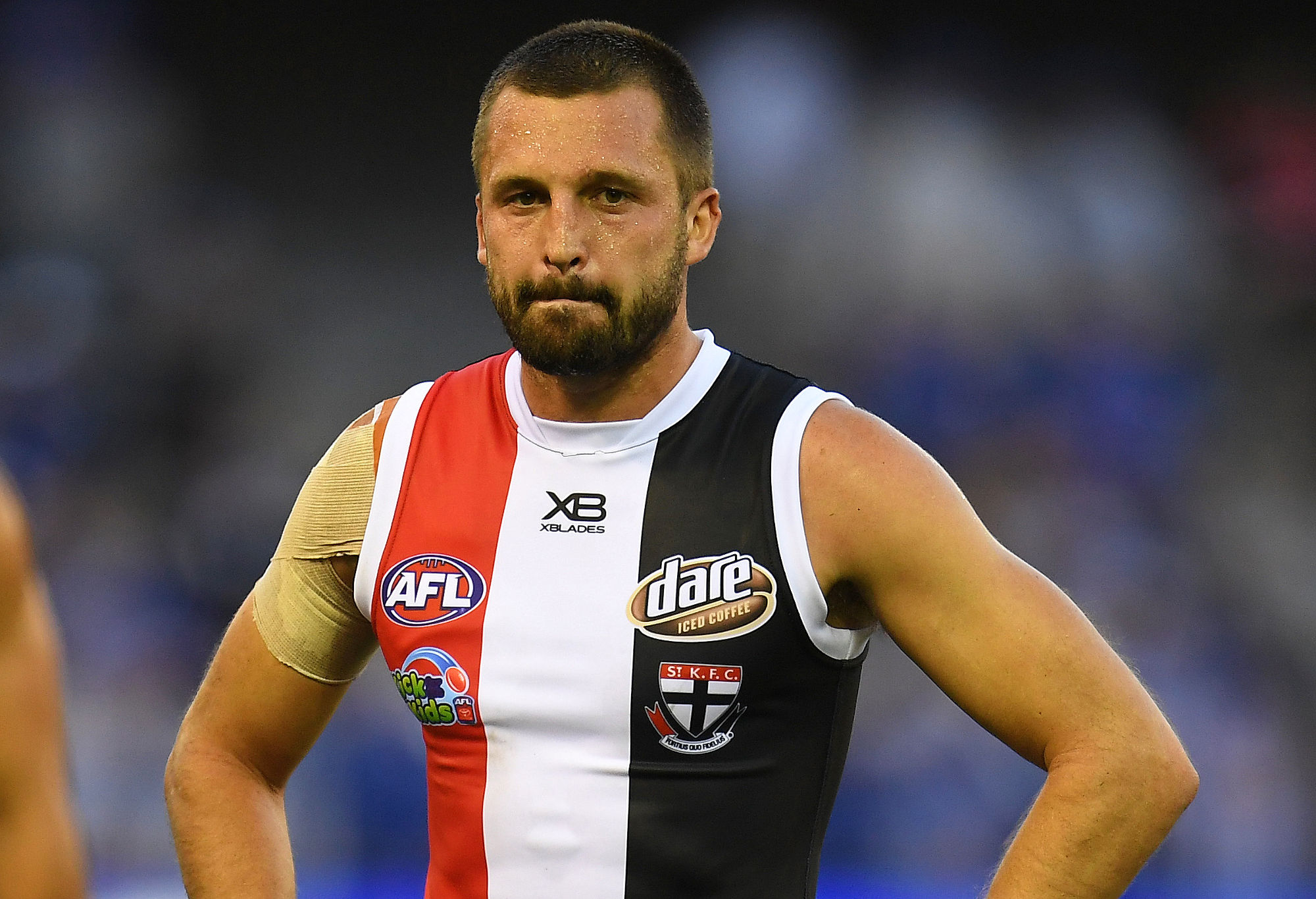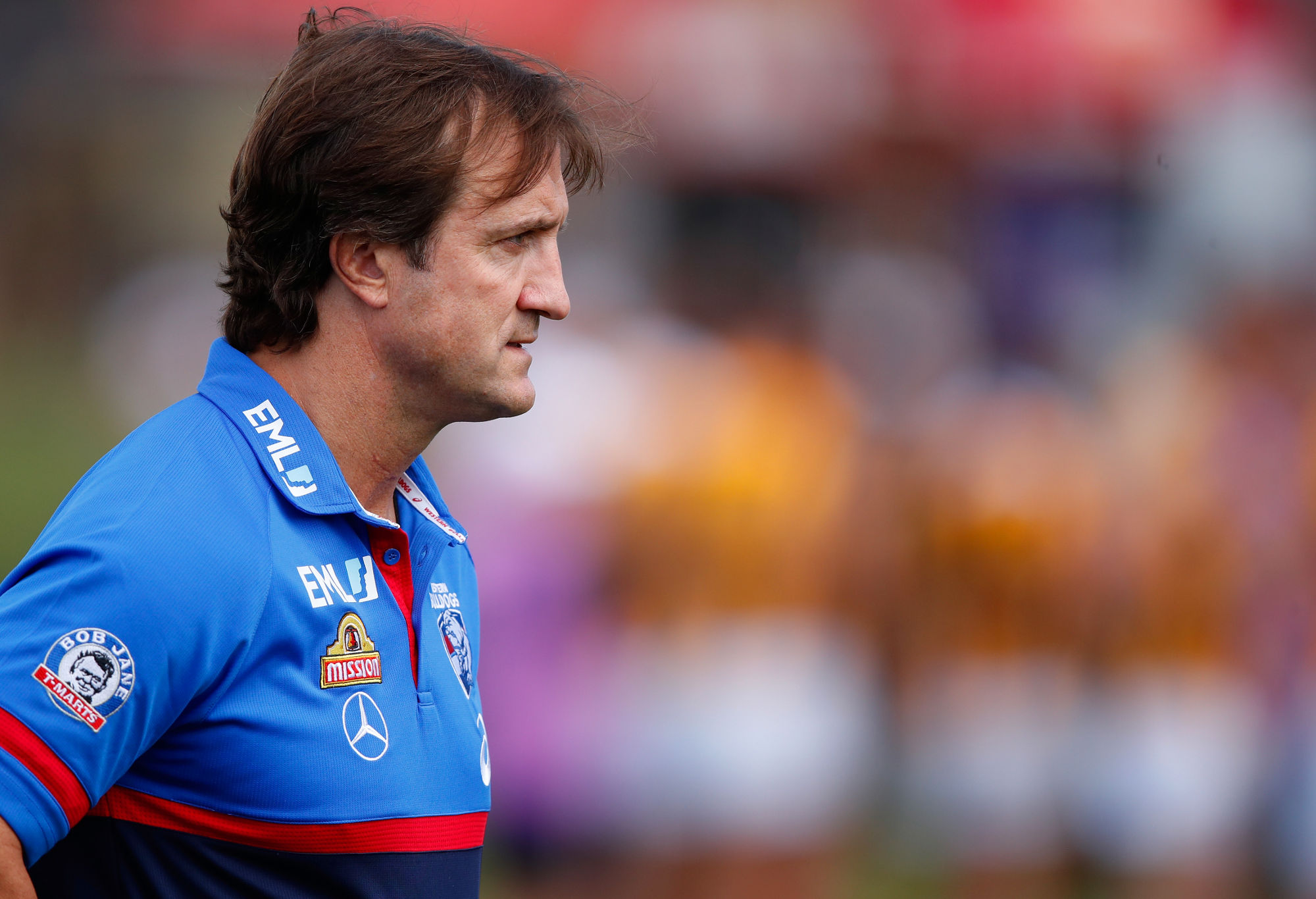Round 2 in the AFL has so far gone largely to script once again, with a common thread weaving its way through many of the match ups: the R word.
Not a recession. A rebuild. That domain of five-year plans, of shedding veterans and playing the kids, of changing coaches and hoping for the best. The expansion years made rebuilding a little tougher than usual, but still, plenty of teams have gone down that path with an expectation that the wins will follow – as soon as this year for some.
Take St Kilda, for instance. The Saints notionally began their rebuild at the end of the 2013 season, after former coach Scott Watters was released and it became clear the club’s list needed a tune-up. They embarked on a so-called five-year plan – The Road to 2018.
“By 2018 we will be a top four side that is positioned to be a consistent premiership contender. By 2020 we will have our second premiership.”
The reality is much of that is marketing gumf. But still, clubs need something to guide their way, and that was it for the Saints.
We’re only two weeks into 2018, but on the eight quarters of football they’ve put to market, that top four goal looks almost assuredly beyond the Saints.
St Kilda looked listless in the first 2.5 quarters against Brisbane last week, and against North Melbourne on Good Friday they were rudderless.
Never has a team been as good at winning the ball as it was poor at doing something constructive with it as the Saints on that day.
St Kilda did as they generally do: won plenty of the ball (+39 uncontested possessions), ran in waves from defensive 50 to their forward 50, and kicked long and deep to a tall forward line.
They applied pressure when the ball was in tight, and won their share of stoppages across the ground. You can look it up yourself; this was a quintessential St Kilda game from a tactical perspective.
On this day, though, the Saints were shown up when the ball hit the deck, and when it travelled down the other end of the ground. They were frequently trapped inside North Melbourne’s attacking 50, and turned the ball over into the ‘Roos press what felt like 500 times.
The AFL’s fancy player tracking statistics were not a fan, either: the Saints’ players averaged 7.7 kilometres per hour running speed when they didn’t have the ball, compared to 8.6 kilometres per hour for North Melbourne.
That might’ve been influenced by the pressing, but it is likely to hint at the lack of defensive intent the Saints showed for much of the day.
It isn’t the first time the Saints have looked mediocre in recent times. One of the tabloid media’s darlings at the start of last year, the Saints were essentially the perfectly average team of 2017: 11 wins, 11 losses, a percentage of 96.9 per cent.
They have plenty of time ahead of them to turn it around; St Kilda is still a young team, albeit one that should be hitting its straps in the next 18 months or so.

(AAP Image/Julian Smith)
A team a little later to the rebuild party was Carlton, a club which has shown signs of taking a small step backwards with its desire to play a fast, counterattacking game in 2018.
Last year the Blues were a stingy, possession-heavy team that was difficult to play against regardless of their opponent’s pedigree. This year, the script has flipped.
Yes the Blues have added the fashion-forward counterpunch string to their bow that most teams vying for the flag have sought to develop. But is it coming at the cost of their hard work from years past?
A rejuvenated Gold Coast badly exposed Carlton’s back six, putting up 26 scoring shots on 50 inside 50s. The Suns could’ve scored even more than they did if they’d better capitalised on their shot positioning – Gold Coast barely took a shot that was outside of posts.
The Blues once again did some nice stuff when the ball was turned over, but were far too easy to score against going the other way.
Tom Lynch going nuclear against a key defender set that was forced to chop and change due to the late withdrawal of Matthew Kreuzer didn’t help.
But it was more than that, the result of the stylistic choice of Brendon Bolton and his coaching crew. It’s fine to try something new, but for Carlton one hopes it doesn’t come at the expense of its previous identity, which had served it well.
Their fellow 2015 re-setters Brisbane are showing the league how to rebuild an on-field identity piece by piece. The Lions once again showed plenty of spunk against a more fancied opponent, and looked the better team for much of their 26 point loss to Melbourne.
Brisbane has been one of the best attacking teams in the league in recent years, a fact papered over by an abysmal defence and piecemeal midfield.
Their midfield now healthy – if still undermanned – and with Luke Hodge marshalling them their defence does enough to keep them in games.
Where in the past a 42-point third quarter deficit would’ve resulted in an 80 point loss, the Lions managed to right their ship and grind the margin back to workable territory.
Melbourne won the day, as they should have coming in, but it was hard to ignore the manner by which Brisbane kept the game alive.
The Dees are also hoping their rebuild will hit a crescendo some time in the next few years. They continue to befuddle, making the simple look difficult.
Melbourne’s attack on the ball is unquestionable, but perhaps it is time to use some more brains instead of relying mostly on brawn? Throwing nine players at the contest to win a ground ball is a recipe to win a lot of ground balls, but it’s also a way to expose your defensive half.
And what of the Dogs? Two dozen games from a premiership, the Dogs once again fielded the youngest team in the competition, and were shown up all across the ground.
After four hours of football this isn’t’ even a question anymore: the Western Bulldogs are not playing their football for this year, or next.

(Photo by Adam Trafford/AFL Media/Getty Images)
This is about building a team to contend some time after the end of this decade – which is closer than you think, but still some way away.
The lesson here is one this column has preached for as long as he’s been taking his football a little too seriously. There is no worse thing a club can do than misjudge where it sits in the hierarchy.
That goes both ways, as the Dogs demonstrate. If the iron is hot you must strike (they did), but if the winter breezes blow then save it for another day (they should).
This lesson applies to the rebuilding class, too. St Kilda is too far down its path to trace back now, but looks a step or two behind the top tier of 2018.
Carlton must not get ahead of itself. Brisbane can feel confident in its direction. Melbourne remains a tinker or two away from taking the final step out of its primordial ooze.
The other option, of course, is to circumvent the rebuild, as today’s combatants have chosen to do. Hawthorn and Geelong have eschewed the draft pick clustering strategy that has been drummed into our collective psyche, and just gone for it with aggressive recruiting.
The Cats are contending. If the Hawks win today we might need to have an awkward conversation about their return to the top eight.
It might even put an end to the R word.































































































